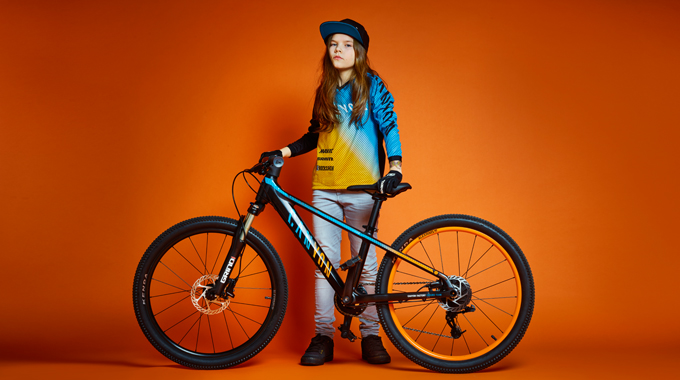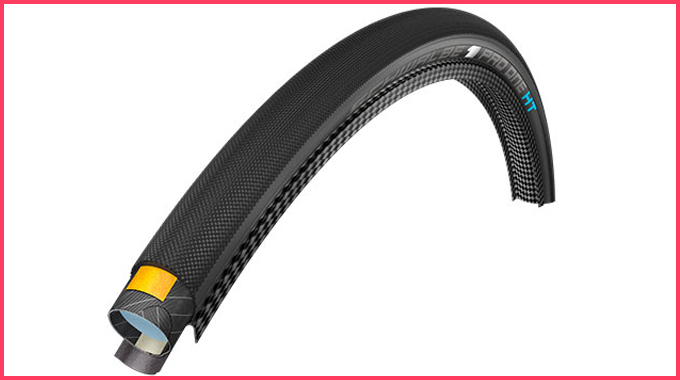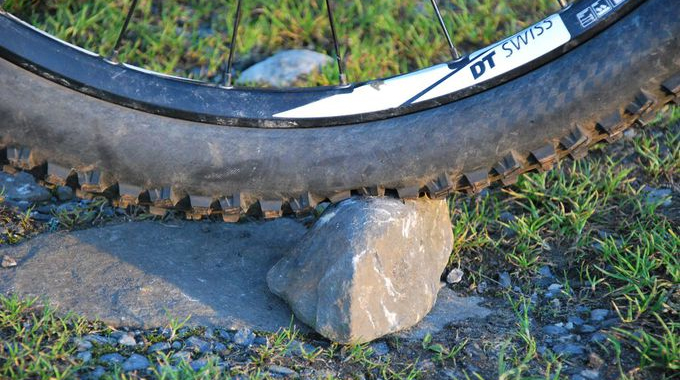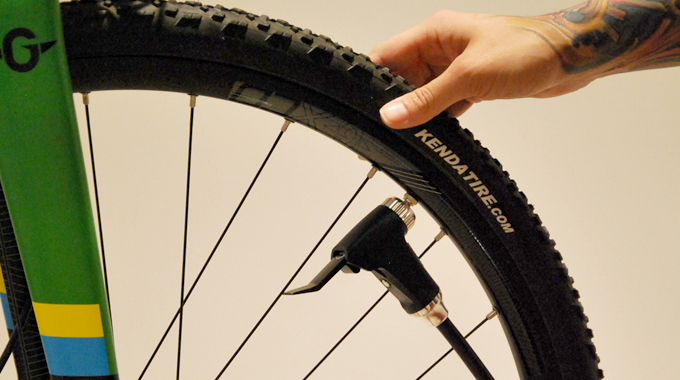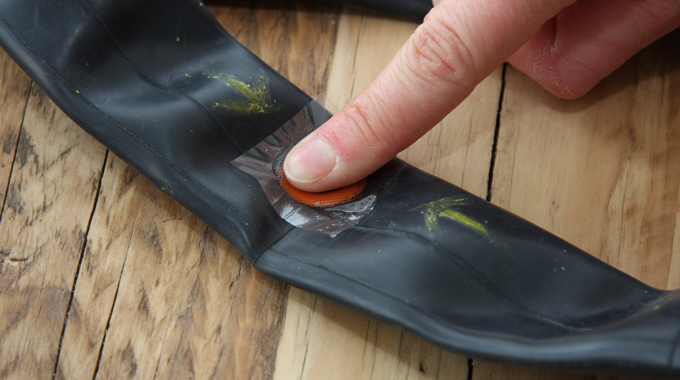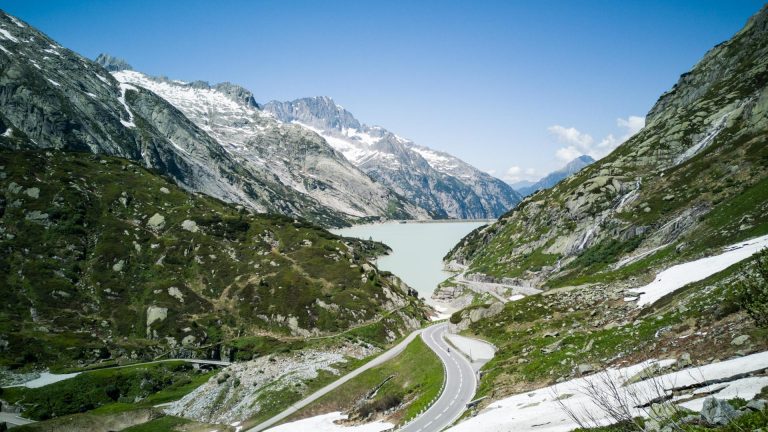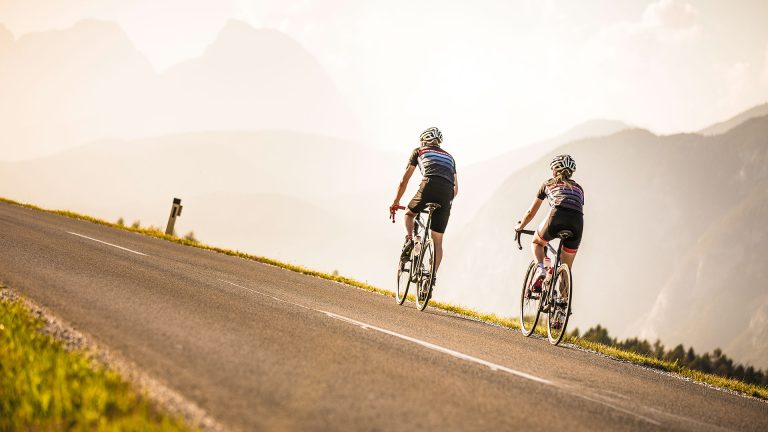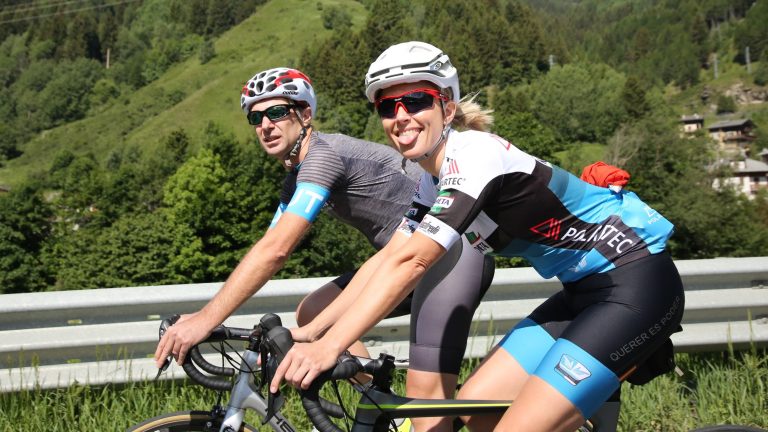The huge choice of tyres in your local bike shop and the bamboozling jargon that goes with them can be a complete headache. Become an instant tyre expert with our plain-English guide to all things rubbery.
How to find the right tyre pressure for your mountain bike
How to find the right tyre pressure for your road bike
Sizes & Fit

Say you’re shopping for new tyres because not only can you see through the rubber on your old ones, but you can see through them if you hold them up to the light. The first thing you need to know is what size you want.
Tyre size is determined by the size of the wheel that the tyre fits, and they have to be the same.
If you read Sheldon Brown’s fabulously geeky pages on tyres (or tires, as he called them) you’ll learn that for historical reasons there are literally dozens of different wheel and tyre sizes. But only a handful are in common use, so to prevent our brains exploding, we’ll just talk about them.
Large-wheeled bikes have either mountain bike size tyres, generally called 27.5″ or 29″, or road bike size, aka 700C. As the name suggests, 27.5″ tyres measure about 27.5″ across. However, 700C don’t measure 700 of anything, though they used to in an archaic French tyre naming system.


